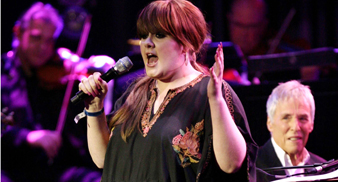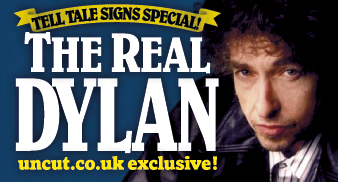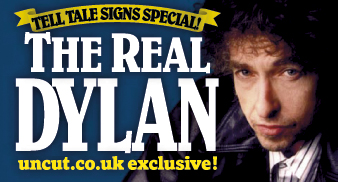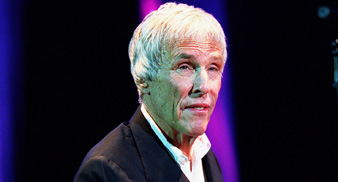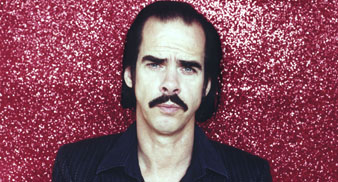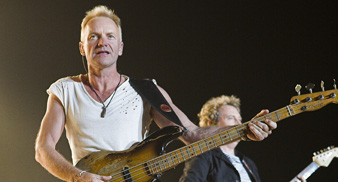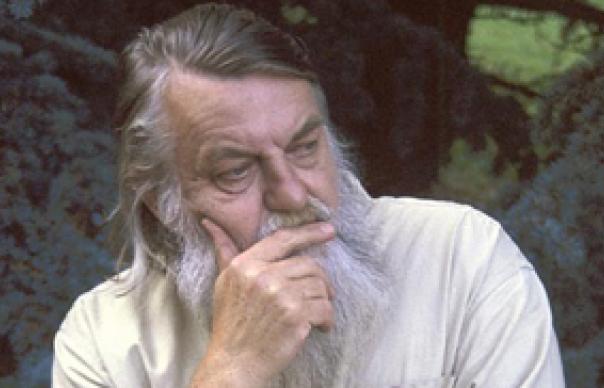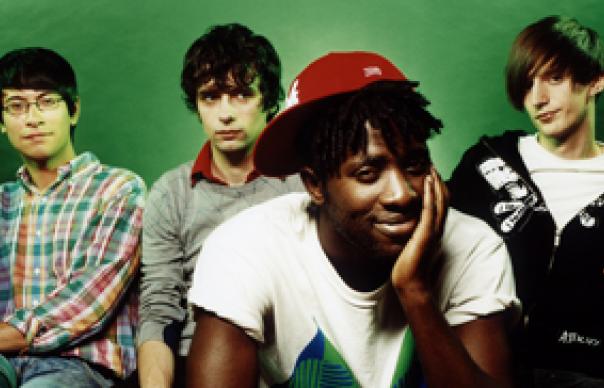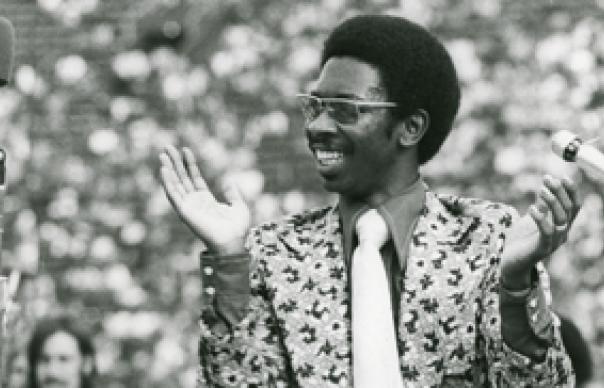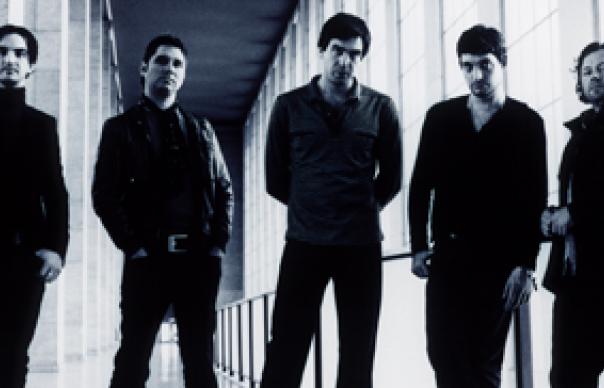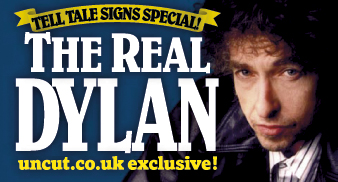BOB DYLAN SPECIAL: The Complete Tell Tale Signs
In this month’s issue of Uncut, we celebrate the release of Tell Tale Signs, the Bootleg Series Vol 8, Bob Dylan’s astonishing 2 and 3CD collection of unreleased material from 1989-2006.
We spoke to the musicians, producers and crew who worked with him during this period. And now, here’s your chance to read the full, unedited transcripts of those interviews.
Today, we present part ten: Daniel Lanois.
You can read previous transcripts by clicking on the side panel (right).
Next one up Wednesday (October 22)!
****
DANIEL LANOIS
The Joshua Tree producer was recommended to Dylan by Bono for 1989’s Oh Mercy, and he returned almost a decade later for Time Out Of Mind. The pursuit of Lanois’ signature sonic ambience resulted in two of Dylan’s most significant albums – and one of his most combative musical relationships.
Jeff Rosen called me a couple of months ago and said he was thinking or releasing the demo version of “I Can’t Wait”. That was my demo, which was done at my theatre. I was renting a theatre at the time in a place called Oxnard [California]. I had my shop set up there for a while. So Bob Dylan would roll down to the teatro, cos it was a Spanish town. That’s where we did the demos for Time Out Of Mind, and out of that demo session came some lovely things, including that version of “I Can’t Wait”, which I feel has a lot of thunder in it. It’s very stripped down ’cause it’s piano – Bob on my lovely turn of the century Steinway, which has a roaring bass in it; me on my goldtop 1956 Les Paul, through a Vox, and Pretty Tony on the drums, who was a friend of mine who stopped by the help with the demos. I was sad to abandon that version, ’cause I think it has lot of rock’n’roll in it.
I did a lot of preparation [for the album] with Pretty Tony in New York City. I listened to a lot of old records that Bob recommended I fish out. Some of them I knew already – some Charley Patton records, dusty old rock’n’roll records really, blues records. And Tony and I played along to those records, and then I built some loops of what Tony and I did, and then abandoned these sources; which is a hip-hop technique. And then I brought those loops to Bob at the teatro. And we built a lot of demos around them, and he loved the fact that there was a good vibe on those. Some of the ultimate productions ended up having those loops in them. Songs like “Million Miles” and, uh, is it “Heartland”? [We think he means “Highlands” – ed] – those long blues numbers have those preparations in their spine.
I wanted people to respond to the vocal and not play across the vocal, so when the singer sings, you keep quiet. And if you want to respond to the singing, then you should have a signature or a melody and not ramblings. The rambling thing belongs to an old Nashville sound, where people pick a lot. I didn’t want ramblings. Just like I don’t like Dixieland playing for that reason – it becomes like a mosquito in the room, like “Would you just stop playing for a minute?” I want to hear the singer. I wanted to make sure that we didn’t fall into the clichés of Nashville ramblings. I think that was OK for the past, but not for now. [Drummer] David Kemper said I told him that the players shouldn’t play pedestrian – they had to play strange? He might have been referring to that particular rant where I felt that people were on autopilot, and I didn’t want autopilot. I wanted Bob’s vocal and lyrics, and then if we had something to say musically aside from that, then let’s say it loud and proud, no meanderings.
Kemper said I didn’t like “Cold Irons Bound”, and that I said “The world doesn’t want another two-note melody from Bob.”? That might have been part of the same rant. But I love “Cold Irons Bound”. I think it’s fantastic. But Kemper wasn’t there for much of that record.
He said he recorded eight songs, but that’s the only one that he’s on the record? Yeah. And maybe not even that one. Brian Blade’s the man you want to speak to if you want to talk about drums. He’s on the record and the other guy’s not. Kemper’s not on the record and Brian Blade’s on the record. Have you not looked at the liner notes? Kemper was sent home. And the guys who played on the record are Brian Blade and Jim Keltner.
In terms of how I worked with Bob, I just operate the same way I always operate. I’m totally committed and I try and look out for the best expression, and the best performance. I’m completely honest and clear about what I think is the best for them. And if anything gets in the way of that, then they’re gonna have to deal with Lanois. But let’s put it this way. When people reach a certain stature, there’s a lot of confidence built around that person, and consequently there’s a lot of people around that think that that person must be right all the time. Unfortunately, it’s not my job to be one of those people!
Bob and I talked about the music he wanted. Oh yeah. In a major way. For Time Out Of Mind we got together in New York. We didn’t even have any instruments or any songs to listen to really. He just had a stack of lyrics. He read me all the lyrics and said: “What do you think, Daniel, do we have a record?” I said yes, because I could hear a record even though I had not heard a note. A lot of philosophical exchanges happened then, about what kind of sound Bob loved. And it was clear to me that he loved records that were made at the birth of a medium. There’s always something fantastic about the beginning of a medium. There’s obviously a fascination with the technology, but beyond that there’s an appetite for the end results.
The ears had not been filled with too much music in the ‘40s, ‘50s, and the ‘30s, and so it was all exciting. The opportunity to hear any recording was regarded as a sacred moment. And that then feeds the work, and there’s a vibrant tone to early works that are flung out of a medium, and Bob wanted that vitality in his work. And I could not disagree with him. I felt that recordings prior to that time had been more for classical settings, where you were documenting something from a slight distance. So if you have an orchestra of 40 people, you don’t mike the lead violinist. You mike the orchestra further back because they have their own sound. They are acoustically balanced, and the job is to document them – and that’s where the term ‘record’ came from. It was a snapshot of something that was already happening. It was not: let’s go in the studio and see how creative we can be.
That came much later, in the ‘60s with The Beatles and all that. And great things came out of that. But Bob was not interested in that kind of patience; the patience required to go in and fiddle around for months on end. That’s not what he’s interested in, not then and not now. He wants to go in and capture the sound of his band or the sound of an orchestra. And so I helped him do that, and Time Out Of Mind had a large ensemble, and much of what you hear is a record of that ensemble with full, natural depth of field, given that you have a large room with people sitting in different chairs, then you automatically get bleeding and certain things getting into the vocal mike, and all of these things add up to an exciting feeling of spontaneous combustion, which is what we love about the birth of rock’n’roll. That’s what I wanted to get on Time Out Of Mind, and I believe we got it.
On Oh Mercy the concept was fully emphasising the centre of the picture. The centre of the picture being the song, and Bob’s voice, and Bob’s guitar playing or piano playing. So I became his companion and bodyguard. I sat next to him and it was essentially the two of us in the centre, and I was his bodyguard to make sure that he got into the centre and occupied the centre. And then we built the frame around the centre, with what we had available to us in the neighbourhood musically – some of the Neville Brothers. And my shop was set up in such a way that Bob and I were at the centre and there were some other instruments around where people could spontaneously stop by and be recording right away. So the preparation and the set up was the success of the additional framing of that record.
You have to be ready to roll at any moment. So, if we want to call that spontaneity, then let preparation be your friend. Because if you say to somebody, ‘could you hang on for a second, we need to fiddle with the microphone on the piano?’ then you’ve lost the moment. And at that point I was pretty much at the top of my game with my studio on the road, so we were a pretty well-oiled machine, so we didn’t miss too much.
The lyrics pretty much dictate the atmosphere, or set the tone for how you’re gonna light your shot. The Oh Mercy tracks were more night-time in feeling. Bob had a rule, we only recorded at night. I think he’s right about that: the body is ready to accommodate a certain tempo at night time – it feels comfortable with a certain tempo, and that tempo will be a little slower than what you would think is a good tempo at the noon bell. I think it’s something to do with the pushing and pulling of the moon. At night-time we’re OK with maybe four or five bpms slower, and ready to be more mysterious and dark. So Oh Mercy’s about that.
I think Bob’s one of the great phrasers. I think he ranks up there with some of my favourite singers, whether it be Stevie Wonder or James Brown. And people don’t talk about Bob that way, but I think he is a master phraser – and I believe a lot of that has come from his extensive study of rhyming schemes, and understanding that you write your lyrics with phrasing punctuation. I’ll give you an example. [Sings] “In the lonely night/in the shadow of a pale blue light/I think of you in black and white/when we were made of dreams.”
So that “When we were made of dreams” – that’s a written part. That’s like Bach, or Beethoven. It’s a written part that you don’t deviate from. So when you write your next verse, you might use a different line than ‘when we were made of dreams’ but it has to have that stab – dum-dum dum-dum dum-duh. If it does not have that stab, then you’ve strayed from the phrasing formula. You’ve strayed from the beauty of that particular commitment to a phrasing. So this is where Bob’s a master, and the newer artists, maybe somebody who came up in a different way, more of a live performer, may not be hip to those early phrasing studies, cos they were busy doing other things.
I’ve heard Bob have several voices over the decades and I like them all. I liked the Nashville Skyline era a lot. There was a particular tone that he adopted. The thing about Bob’s voice is that he has very dense print. The microphone loves his voice. He’s got about a 20 dB advantage over other singers – in the sense that he’s got that mid-range in his print. To we record-makers, that means that you get to turn the microphone down 20 dB, because he’s delivering an extra 20, which means you then get a 20dB improvement on your signal to noise ratio. So the bleeding into Bob’s mike is not a problem, it’s an enhancement. But if a quieter singer was in the room, with a lesser print, you could not get away with that recording that we did on Time Out Of Mind cos it would just be junky and mumbo-jumbo.
Too many cymbals spilling into the singer’s mike and so on. So Bob is a great artist to record with people around him. That’s a very big part of the sound of Time Out Of Mind – the cacophonous out-of-control situation is well represented. And as a technical point, whenever we had to replace a vocal line, sometimes would change a lyric – [engineer Mark] Howard and I went to extensive set-up to replicate the bleeding of the band into Bob’s vocal mike. We set up speakers around the room for him to do those repairs, and the music was piped through those speakers, simulating the presence and volume of the band in the room. So that when we did a vocal repair, we also had the band bleeding in. It’s a skin graft that has the same pigment.
ALASTAIR McKAY


